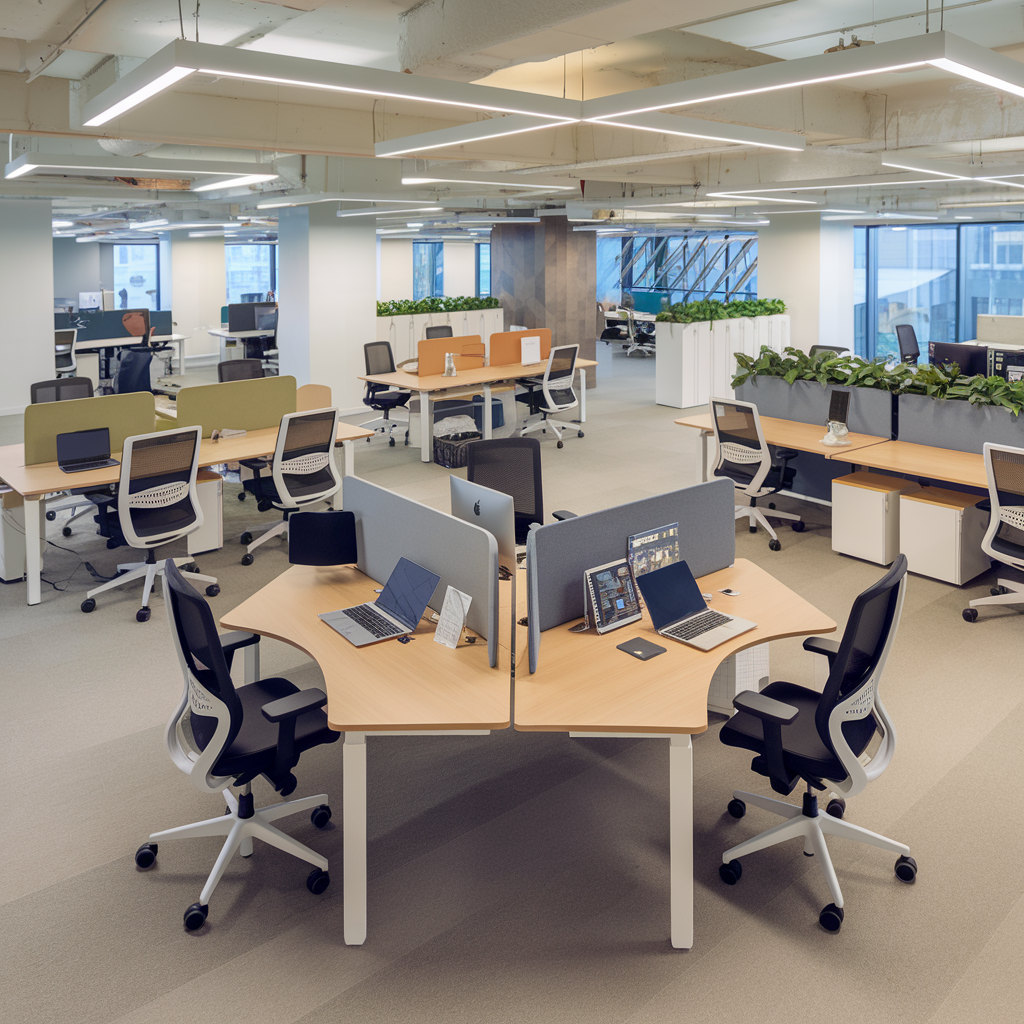How to Choose the Right Desk Cluster for Your Office Team
Selecting the right desk cluster for your office team is more than just choosing furniture—it’s about designing a space that supports collaboration, workflow, and employee well-being. Whether you’re outfitting a startup or upgrading a corporate workspace, this guide will help you choose the right desk cluster that fits your team’s layout, culture, and functional needs.
Understand Your Office Layout and Space
Measure the Workspace Area
Before choosing a desk cluster, evaluate your office’s floor plan. Measure the available space, taking into account:
- Wall lengths and obstructions
- Windows, doors, and built-ins
- Walkways and clearances (at least 36 inches for movement)
Explore more layout tips in our Team Workstations Blog.
Choose a Desk Cluster Shape
- Linear desk clusters: Ideal for narrow rooms or alongside walls
- U-shaped or circular clusters: Best for high-collaboration teams
- L-shaped pods: Help define individual space while encouraging interaction
Your spatial layout will influence which cluster design enhances team dynamics without feeling cramped. See our guide on Designing Collaborative Workspaces for real-life examples.
Define Your Team’s Work Style
Collaborative vs Independent Roles
If your team requires constant collaboration (e.g., sales, product teams), opt for open clusters that promote eye contact and ease of communication. For roles needing more focus (e.g., developers, finance), use desk partitions or L-shaped clusters.
Fixed Teams vs Rotating Seating
For flexible seating arrangements or hot desking, choose modular desk clusters that can be easily reconfigured. Discover how to set up a 4-person desk cluster efficiently.
Choose the Right Size and Configuration
Standard Dimensions
A typical desk in a cluster is:
- Width (W): 47–63 inches (120–160 cm)
- Depth (D): 24–30 inches (60–75 cm)
- Height (H): 29–30 inches (73–76 cm)
Multiply these sizes by the number of team members to estimate the total footprint. Allow enough room for circulation and storage.
Common Desk Cluster Configurations
- 2-person cluster: Great for small teams or side-by-side seating
- 4-person cluster: Most common, balances space and interaction
- 6-person or 8-person cluster: Suitable for larger departments
Explore various desk cluster configurations available at Pnstime.
Materials and Build Quality Matter
Why Choose Solid Wood Desk Clusters?
Solid wood provides:
- Long-term durability
- Timeless aesthetics
- Natural texture and warmth
Compared to particle board or laminate, wooden desk clusters withstand heavy daily use better and elevate the overall look of your office. Browse options in our Desks Collection to complement your cluster layout.
Look for Integrated Features
- Cable management holes
- Built-in drawer units
- Privacy panels or acoustic screens
- Adjustable legs or modular add-ons
Learn more in the Office Storage Tips Blog.
Don’t Forget Ergonomics
Consider Employee Comfort
- Desk height should match ergonomic seating
- Allow enough legroom (at least 24 inches deep)
- Add ergonomic chairs for posture support
Ergonomic desk clusters reduce fatigue, boost productivity, and prevent long-term health issues. Pair them with items from our Wall Shelves Collection for efficient vertical organization.
Budget and Long-Term Planning
Think Beyond Price
While desk clusters are a major investment, they should be seen as a long-term asset. Opting for durable, modular wood furniture pays off in longevity, flexibility, and employee satisfaction.
Scalability Matters
Choose systems that can scale as your team grows. Modular desk clusters make it easier to add seats without disrupting the overall office flow.
Final Thoughts
The right desk cluster blends ergonomics, collaboration, and space optimization. By understanding your layout, work culture, and long-term goals, you can choose office furniture that empowers your team and elevates your workspace.

